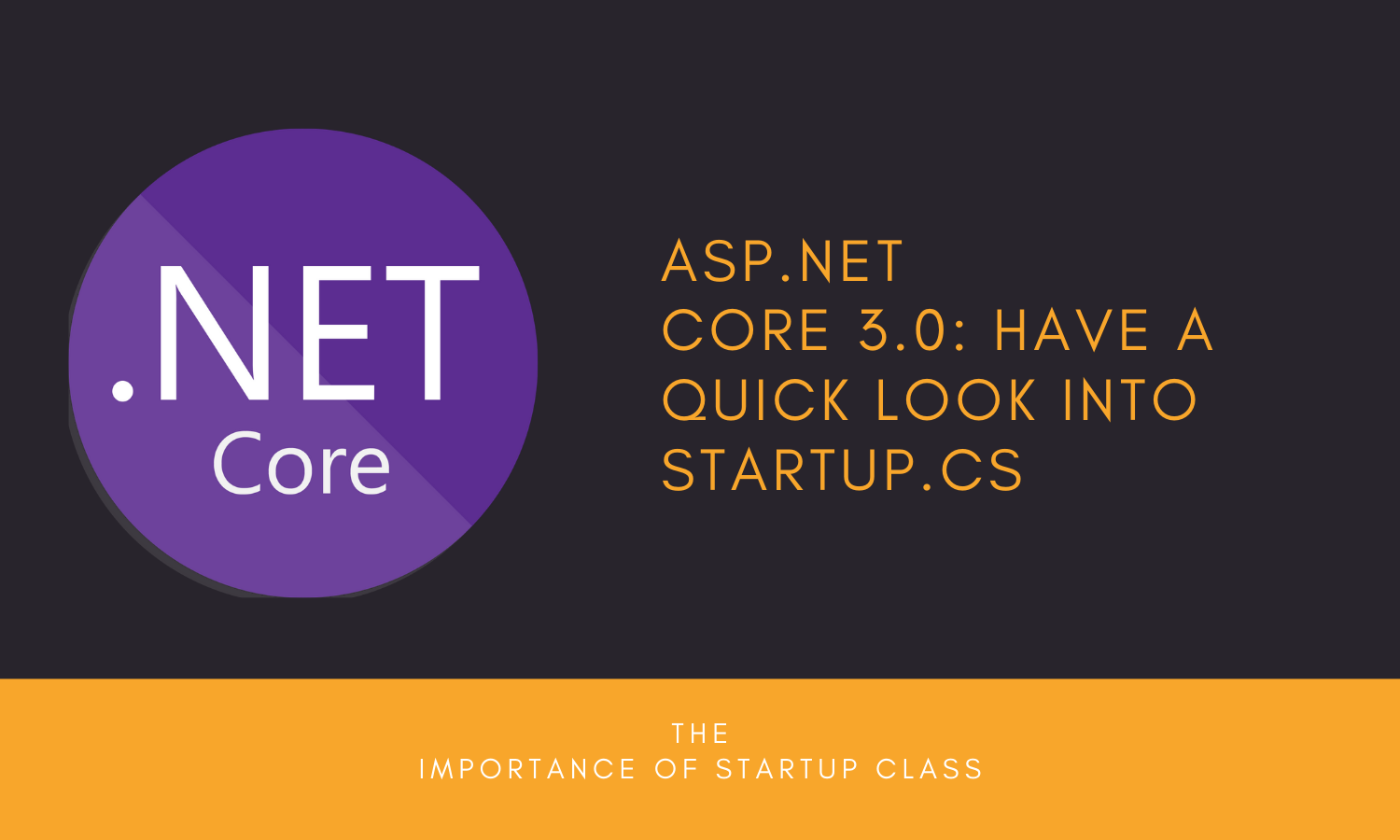
In this article, we will explore the Startup.cs, the Startup class which is an eminent part of ASP.NET Core 3.0. Most of the applications build with ASP.NET Core contain the startup class. Basically, the startup classes are similar to the Global.asax, which is present in the traditional .NET app. Based on the name of the name; it is executed just when the ASP.NET app is started. In order to configure the startup, you would be required to use UseStartup<T>() methodology. The term ‘Startup’ is derived by the ASP.NET Core convention. Though, any title can be given to the Startup class. In order to name the class, you can just identify it as a common parameter in UseStartup<T>(). , you would have to initiate the Startup class in Visual Studio. To do that, you would have to click the Startup.cs, which is present at the solution explorer.
The importance of Startup Class
Startup class is compulsory in the ASP.net core app. Basically, it is the entry point of any ASP.NET Core app. The class is used to configure the request pipeline that is meant to manage each and every request which is made to the app. In order to initiate the startup class, you would have to enter the Open Web Interface for ASP.NET (OWIN). This is the requirement to lessen the reliance of the .NET app on the server. The startup class may consist of any access modifier, like internal, public or private, internal. Being the entry point of a .NET app, startup class is used on a regular basis. Also, it consists of a host of items related to the app configuration.
The startup class mostly consists of two major methodologies. One of them is ConfigureServices and the other one is Configure.
A bit more about the ConfigureServices
ConfigureServices is one of the methods to initiate the startup class. Though, it is not compulsory to declare the ConfigureServices method in the startup class. The main reason why it is used is to configure services that are mostly used by .NET apps. In case the app is requested for the very first time, then in that scenario, you would have to call the ConfigureServices method. Basically, it has to be called along with a public access modifier. The reason is that if we have the access modifier, then the process of comprehending the content from the metadata will be easier.
You will find a specifically dedicated and innate aid for the Dependency injection in the ASP.Net Core. Services can be added to the Dependency injection container with the help of ConfigureServices. There are different ways to make the most of ConfigureServices, therefore, it is important to grasp the complete understanding before initiating the startup class.
A bit more about the Configure method
There are two basic parts of the Configure method. One of them is IApplicationBuilder and the other one is IHostingEnvironment. The first one is used in order to organize the functionality of the mid pipeline. And, at the same time, IHostingEnvironment allows the .NET apps to easily distinguish between plenty of environment types. For example, it helps to differentiate production from testing. After adding the services to the ConfigureConfigureService method, you would identify that the services are accessible to the Configure method as well, and the configure method can also be used.
You might also like to read 10 Reasons Why C# Is The Most Popular Programming Language
Both of these methods are used extensively in the ASP.NET Core projects. As many big projects need configuration, therefore, the users have to be careful of using the apt methods. At the same time, the configuration also needs a lot of work. There are so many aspects of configuration like you have to take care of the authorization policies, configure OIDC, claims transformations, Swagger, data services, etc. Mostly, the configure methods are used as it is simple and quick. Startup class is used extensively by the experts of Asp.net Development Company India. It is used by the engineers to kick start various things. And, different methods are a part of the startup class. Thus, in order to understand and make the most of the startup class, it is also ways recommended to grasp the complete understanding of how the startup class works and how it can be sued for the betterment of the project.







Leave a Reply